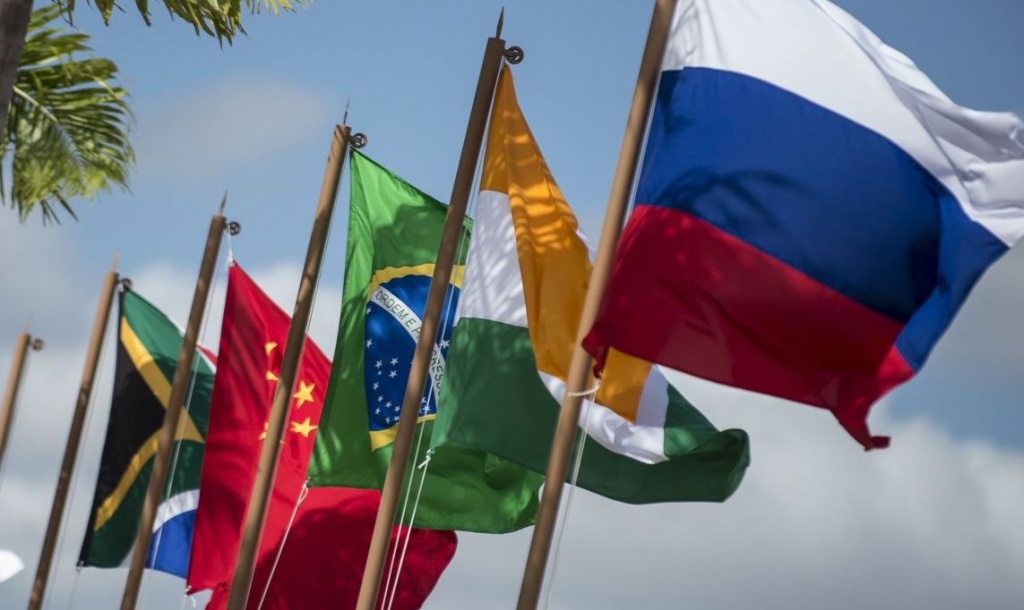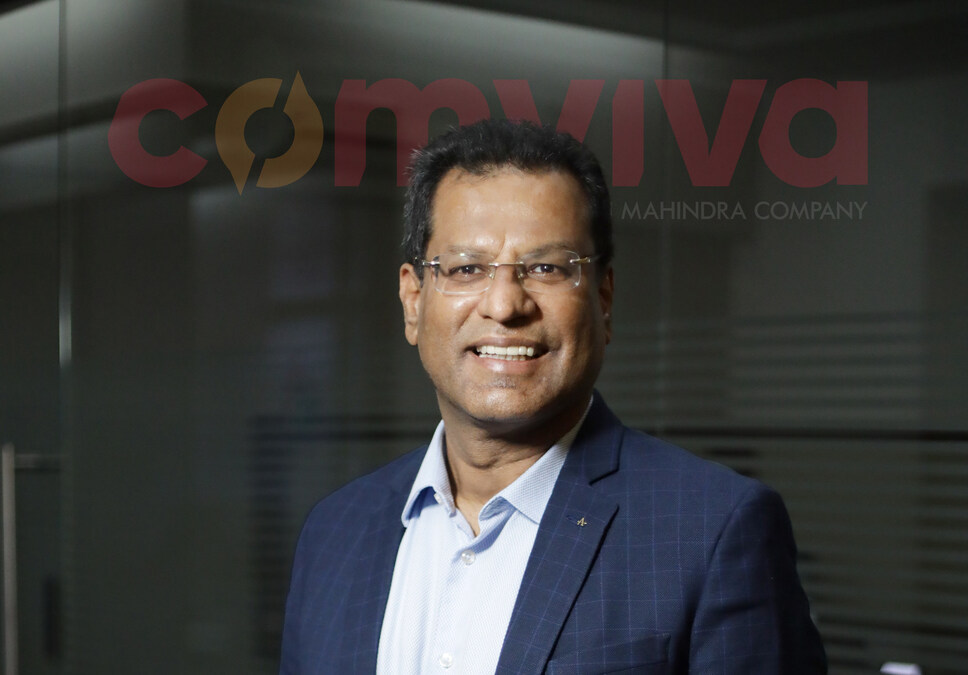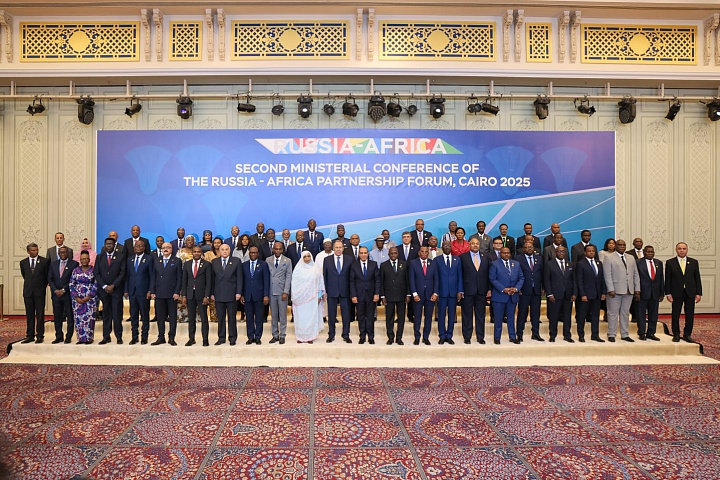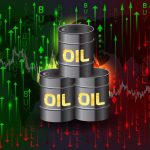World
China-India Conflict a Potential Threat to BRICS Association

By Kestér Kenn Klomegâh
The tension between China and India threatens to paralyse BRICS – the association of five major emerging national economies: Brazil, Russia, India, China and South Africa. While struggling to expand and influence on the global stage, China and India have locked horns over issues in their bilateral relations, ranging from border security to trade conflicts and information war.
The latest strains began in early May and culminated in hand-to-hand fighting in the Galwan Valley, a remote stretch of the 3,380-kilometre (2,100-mile) Line of Actual Control – the border established following a war between India and China in 1962 that resulted in an uneasy truce.
Punsara Amarasinghe, a former research fellow at the Faculty of Law, Higher School of Economics in Moscow, and now a PhD candidate in international law at the Sant’Anna School of Advanced Studies in Pisa, Italy, argues that this tension is rather ironic given that in the past the two countries shared many civilisational values and both were victims of Western colonialism.
When India gained independence in 1947 from the British, its first prime minister Jawaharlal Nehru built a rapport with Communist China by accepting the government of Mao Zedong with great anticipation that both China and India would become the stalwarts in the global campaign against Western imperialism. For example, it was Nehru’s idea that China should be granted a place in the non-aligned movement despite some of opposition from some members at the famous Bandung Conference in 1955.
However, the comity between the two nations was short-lived as China claimed the territory near Arunachal Pradesh whereas India adhered to the line of control known as the McMahon Line established by the British under the 1914 Simla Convention with the consent of Tibet. From the 1950s onwards, China showed its interest in the Aksai Chin area albeit its cordial relations with Nehru’s India. This long dispute finally ended in military escalation in 1962 and became known as the Sino-Indian War.
While acknowledging that some other issues have marred their relationship apart from the current border conflict, Amarasinghe told this article author that “both China and India have longed for global governance as emerging powers, and particularly, the influence expanded by China in South Asia has rapidly increased India’s doubt on China’s presence. Secondly, China’s ambitious Belt and Road Initiative project has encircled India geopolitically, creating a plethora of doubts about India’s state apparatus.”
He added that the notion of nuclear weapon strategies and India’s affinity with the USA are the biggest dilemmas that China has persistently had in dealing with India. Moreover, India has been the sanctuary for Tibetan refugees, including the Dalai Lama.
As to the fundamental question of whether all these issues put together could reappear in future, Amarasinghe emphasized: “Having looked at the trajectories of the history of Indo-China conflict, one can ascertain that the India-China issue has always been imbued with a question of power. Both states are yearning for global governance. Yet India is ahead of the curve as the world’s largest democracy and a state with one of the strongest soft powers, making the Indian narrative stronger, whereas Beijing is known for its autocracy.”
On the other hand, he reminded, “We should not forget that the pact signed between China and India in 1996 clearly says that two states cannot use firearms in a border dispute escalation. However, there have been several events that have shown the acts of aggression in the Indo-China border conflict. The Chinese efforts to build a road in the Doklam area near the border created a tense situation in 2017. Three years after that event, the conflict erupted again.”
China’s Foreign Ministry stipulated measures that would be implemented to normalise the situation and prevent future armed conflicts. “The sides welcomed the developments of relations between defence agencies and the external affairs ministries, agreed to support such consultations in the future and implement agreements that were reached by the two sides during the talks between the border troops commanders, as well complete as soon as possible the process of frontline troop withdrawal,” read a ministry statement.
The Foreign Ministry noted that the sides also reached an agreement to implement measures to “prevent the reoccurrence of incidents which may influence the situation and peace in the border region.”
“The relationship of China and India underwent various trials and their progress towards modern development was not always swift. As had been recently demonstrated correctly, and at the same time incorrectly, by the recent incident in the western sector of the China-India border in the Galwan River valley, China will continue to assert its territorial sovereignty as well as peace and tranquillity in the border region,” according to the statement.
The sides expressed readiness to respect the agreements achieved previously by the heads of state, pay specific attention to the issue of state borders and prevent “disagreements from becoming conflicts.” The sides also confirmed their adherence to the earlier agreements on the state border and expressed readiness to implement measures to normalise the situation in the border region.
Sino-Indian geopolitical rivalry is certainly not new, but today it has multifaceted implications for developments in the South Asian region and most possibly for BRICS. For example, in email discussions, Dr. Zhu Ming of the Institute for Global Governance Studies at the Shanghai Institute for International Studies (SIIS), noted that while there have been several disagreements between China and India, some have been resolved within the framework of international law but others have remained without comprehensive solutions.
Within the context of geopolitical alliances and emerging challenges, Tahama Asadis, a graduate of Strategic Studies from the National Defence University in Islamabad, noted the changing alliances and power equilibrium among the United States, China, India and Pakistan that bear key implications for inter-state rivalry and the consequent crisis dynamics in South Asia.
China has so far been successful in influencing South Asia because of many factors. One of the major reasons is that China has managed to project itself as a neighbour that would not interfere in the internal affairs of other countries, least of all, in the internal affairs of its friends and partners. In the light of its ‘Good Neighbour Policy’, China’s increased diplomatic and economic engagements in South Asia are aimed at enhancing its strategic influence in the region.
Professor Ian Taylor at the University of St Andrews in the United Kingdom explained that he did not see any long-term future for the BRICS as a coherent grouping on the world stage. According to Taylor, the China-India rivalry (as exemplified by border clashes) shows how shallow the alliance is. Furthermore, Brasilia has its own “Brazilian Trump” who sees alliance with the West as the way forward, not with other “developing countries”.
Originally, BRIC was a four-member alliance until South Africa officially became a member in December 2010, after formally being invited by China to join and subsequently being accepted by the founding BRIC countries. The group was renamed BRICS – with the “S” standing for South Africa – to reflect the group’s expanded membership. South Africa is a staunch member of the Southern African Development Community (SADC).
“South Africa is in terminal decline and was only admitted to the BRICS for politically expedient-politically correct reasons. Its membership damaged the group’s credibility. And of course, China will resist to the very end the notion that India be admitted to the UN Security Council as a Permanent Member,” Taylor explained, adding that so much for the vaunted “South-South solidarity” that the BRICS was supposed to represent and what all the noise was about when it was launched.
Zhu Ming holds conservative not so negative views on the future of BRICS amid India-China conflicts, giving two reasons. The first and most important is that Beijing is still keeping a low profile on this conflict. For instance, Chinese local media coverage of this conflict is still quite low, and Beijing has not revealed losses on the Chinese side in order not to form the impression of too huge a gap in losses between the two sides as to humiliate the Indian side. “Just imagine, if two people were fighting, the situation would be extremely hard to turn back to normal very soon. But if one side could keep relatively calm, the situation would be more optimistic.”
Secondly, the disputed land is not worthy of a war between the two countries. “However, the rising nationalist mood of India is a bit troublesome. BRICS is not nothing to New Delhi, it will not be a good option for India to quit BRICS. Since BRICS was formed jointly by five powers, China does not own BRICS,” he told this article author, adding, “It is a bit early to judge the prospects of BRICS. It is quite possible that the global and BRICS health governance system could be another rising cooperation field within the BRICS group after the forthcoming BRICS summit.”
“While there are no official claims from the Kremlin that Putin was brokering any negotiation between the two to reconcile the border dispute if Russia can make a good move in meddling with the Indo-China border conflict, I assume it will work to a greater extent. Given the history of Russia’s dominant role in South Asia since its Soviet past, Moscow has a greater capacity to play the role of mediator. Besides that, BRICS is a platform for emerging powers and its capacity cannot be discarded as a regional political talk shop. Thus, I believe BRICS would create some steps for a more amicable solution,” Amarasinghe concluded on an optimistic note.
Alicia Garcia-Herrero is Senior Research Fellow at the Brussels-based think tank Bruegel and Adjunct Professor at the Hong Kong University of Science and Technology, noted in her article headlined “China Continues To Dominate An Expanded BRICS” published by the East Asia Forum that China has been the leading proponent of expanding BRICS to BRICS+. The main reason for the expansion was to make BRICS more representative of the developing world and give it a stronger voice on the global stage.
But the six countries invited to join — which has become five after Argentina’s withdrawal — are quite heterogeneous. Some are net creditors (such as Saudi Arabia and the United Arab Emirates), while others are net debtors and in a very weak financial position. Half of them are large exporters of fossil fuels (Saudi Arabia, the United Arab Emirates and Iran). Ethiopia and Egypt stand out as members from Africa, a continent that has become increasingly important for China’s and India’s foreign policy, according to Garcia-Herrero.
The BRICS countries are considered the foremost geopolitical rival to the G7 bloc of leading advanced economies, implementing competing initiatives such as the New Development Bank, the BRICS Contingent Reserve Arrangement, the BRICS pay, the BRICS Joint Statistical Publication and the BRICS basket reserve currency. But in practical reality, China has large control and uses the platform to widen its economic influence. Most of the trade growth has been China-centric, with contributions from the rest of BRICS remaining quite flat until recently. Russia, with its limited economic impact, only remains an excellent public relations organizer for BRICS.
The BRICS members are known for their significant influence on regional affairs, and all are members of the G20. Since its establishment in 2009, the BRICS nations have met annually at several summits, with South Africa having hosted the most recent 15th BRICS Summit in August 2023. Currently, Russia is heading the rotating in 2024 and plans to push forward significant issues, particularly the association’s expansion and transforming it into an anti-Western coalition. Reports indicate about 40 countries, the majority in Africa and Asia have expressed readiness to join BRICS from the Global South. The association has three areas of strategic partnership: policy and security, economy and finance, and cultural and educational cooperation.
Between now and until October when Kazan will host the 16th summit, Moscow has scheduled various activities including the BRICS Games, BRICS Foreign Ministers, BRICS Academic and BRICS Parliamentary meetings, these aim at showcasing BRICS geopolitical influence and increasing coalition for building a fairer, better and multipolar world. It also operates based on non-interference and equality with the hope of ensuring members get mutual economic benefits in the world. BRICS has received both praise and criticism from academics, researchers, politicians geopolitical analysts and writers around the world.
The origins of BRICS — a bloc comprising Brazil, Russia, India, China, South Africa and, as of 2024, new members Egypt, Ethiopia, Iran and the United Arab Emirates — can be traced back to a 2001 publication by Goldman Sachs economist Jim O’Neill titled ‘Building Better Global Economic BRICs’. O’Neill argued that Brazil, Russia, India and China were poised to play an increasingly significant role in the global economy. BRIC was officially launched in 2009 and was renamed BRICS in 2010 when South Africa joined, and Russia will make history by admitting the largest ever in 2024.
The founding countries of Brazil, Russia, India, and China held the first summit in Yekaterinburg in 2009, with South Africa joining the association a year later. Egypt, Ethiopia, Iran and the United Arab Emirates joined on 1 January 2024 The five BRICS countries together represent over 3.1 billion people, or about 41 percent of the world population. The five nations had a combined nominal Gross Domestic Product (GDP) of 18.6 trillion dollars and an estimated 4.46 trillion dollars in combined foreign reserves.
World
Comviva Wins at IBSi Global FinTech Innovation Award

By Modupe Gbadeyanka
For transforming cross-border payments through its deployment with Global Money Exchange, Comviva has been named Best In-Class Cross Border Payments.
The global leader in digital transformation solutions clinched this latest accolade at the IBS Intelligence Global FinTech Innovation Award 2025.
The recognition highlights how Comviva’s mobiquity Pay is helping shape a modern cross-border payment ecosystem that stretches far beyond conventional remittance services.
Deployed as a white label Wallet Platform and launched as Global Pay Oman App, it fulfils GMEC’s dual vision—positioning itself as an innovative payment service provider while digitally extending its core money transfer business.
The solution allows GMEC to offer international money transfers alongside seamless forex ordering and other services. These capabilities sit alongside a broad suite of everyday financial services, including bill and utility payments, merchant transactions, education-related payments, and other digital conveniences — all delivered through one unified experience.
“This award is a testament to Oman’s accelerating digital transformation and our commitment to reshaping how cross-border payments serve people and businesses across the Sultanate.
“By partnering with Comviva and bringing the Global Pay Oman Super App, we have moved beyond traditional remittance services to create a truly inclusive and future-ready financial ecosystem.
“This innovation is not only enhancing convenience and transparency for our customers but is also supporting Oman’s broader vision of building a digitally empowered economy,” the Managing Director at Global Money Exchange, Subromoniyan K.S, said.
Also commenting, the chief executive of Comviva, Mr Rajesh Chandiramani, said, “Cross-border payments are becoming a daily necessity, not a niche service, particularly for migrant and trade-linked economies.
“This recognition from IBS Intelligence validates our focus on building payment platforms that combine global reach with local relevance, operational resilience and a strong user experience. The deployment with Global Money Exchange Co. demonstrates how mobiquity® Pay enables financial institutions to move beyond remittances and deliver integrated digital services at scale.”
“The deployment of mobiquity Pay for GMEC showcases how scalable, API-driven digital wallet platforms can transform cross-border payments into seamless, value-rich experiences.
“By integrating remittances, bill payments, forex services, and AI-powered engagement into a unified Super App, Comviva has reimagined customer journeys and operational agility.
“This Best-in-Class Cross-border Payments award win stands as a testament to Comviva’s excellence in enabling financial institutions to compete and grow in a digitally convergent world,” the Director for Research and Digital Properties at IBS Intelligence, Nikhil Gokhale, said.
World
Russia Renews Africa’s Strategic Action Plan

By Kestér Kenn Klomegâh
At the end of an extensive consultation with African foreign ministers, Russian Foreign Minister, Sergey Lavrov, has emphasized that Moscow would advance its economic engagement across Africa, admittedly outlining obstacles delaying the prompt implementation of several initiatives set forth in Strategic Action Plan (2023-2026) approved in St. Petersburg during the Russia-Africa Summit.
The second Ministerial Conference, by the Russian Foreign Ministry with support from Roscongress Foundation and the Arab Republic of Egypt, marked an important milestone towards raising bilateral investment and economic cooperation.
In Cairo, the capital city of the Arab Republic of Egypt, Lavrov read out the final resolution script, in a full-packed conference hall, and voiced strong confidence that Moscow would achieve its strategic economic goals with Africa, with support from the African Union (AU) and other Regional Economic blocs in the subsequent years. Despite the complexities posed by the Russia-Ukraine crisis, combined with geopolitical conditions inside the African continent, Moscow however reiterated its position to take serious steps in finding pragmatic prospects for mutual cooperation and improve multifaceted relations with Africa, distinctively in the different sectors: in trade, economic and investment spheres, education and culture, humanitarian and other promising areas.
The main event was the plenary session co-chaired by Russian Foreign Minister Sergey Lavrov and Egyptian Minister of Foreign Affairs, Emigration, and Egyptians Abroad Bashar Abdelathi. Welcome messages from Russian President Vladimir Putin and Egyptian President Abdelhak Sisi were read.
And broadly, the meeting participants compared notes on the most pressing issues on the international and Russian-African agendas, with a focus on the full implementation of the Russia-Africa Partnership Forum Action Plan for 2023-2026, approved at the second Russia-Africa Summit in St. Petersburg in 2023.
In addition, on the sidelines of the conference, Lavrov held talks with his African counterparts, and a number of bilateral documents were signed. A thematic event was held with the participation of Russian and African relevant agencies and organizations, aimed at unlocking the potential of trilateral Russia-Egypt-Africa cooperation in trade, economic, and educational spheres.
With changing times, Africa is rapidly becoming one of the key centers of a multipolar world order. It is experiencing a second awakening. Following their long-ago political independence, African countries are increasingly insisting on respect for their sovereignty and their right to independently manage their resources and destiny. Based on these conditions, it was concluded that Moscow begins an effective and comprehensive work on preparing a new three-year Cooperation and Joint Action Plan between Russia and Africa.
Moreover, these important areas of joint practical work are already detailed in the Joint Statement, which was unanimously approved and will serve as an important guideline for future work. According to reports, the Joint Statement reflects the progress of discussions on international and regional issues, as well as matters of global significance.
Following the conference, the Joint Statement adopted reflects shared approaches to addressing challenges and a mutual commitment to strengthening multifaceted cooperation with a view to ensuring high-quality preparation for the third Russia-Africa Summit in 2026.
On December 19-20, the Second Ministerial Conference of the Russia-Africa Partnership Forum was held in Cairo, Egypt. It was held for the first time on the African continent, attended by heads and representatives of the foreign policy ministries of 52 African states and the executive bodies of eight regional integration associations.
World
TikTok Signs Deal to Avoid US Ban

By Adedapo Adesanya
Social media platform, TikTok’s Chinese owner ByteDance has signed binding agreements with United States and global investors to operate its business in America.
Half of the joint venture will be owned by a group of investors, including Oracle, Silver Lake and the Emirati investment firm MGX, according to a memo sent by chief executive, Mr Shou Zi Chew.
The deal, which is set to close on January 22, 2026 would end years of efforts by the US government to force ByteDance to sell its US operations over national security concerns.
It is in line with a deal unveiled in September, when US President Donald Trump delayed the enforcement of a law that would ban the app unless it was sold.
In the memo, TikTok said the deal will enable “over 170 million Americans to continue discovering a world of endless possibilities as part of a vital global community”.
Under the agreement, ByteDance will retain 19.9 per cent of the business, while Oracle, Silver Lake and Abu Dhabi-based MGX will hold 15 per cent each.
Another 30.1 per cent will be held by affiliates of existing ByteDance investors, according to the memo.
The White House previously said that Oracle, which was co-founded by President Trump’s supporter Larry Ellison, will license TikTok’s recommendation algorithm as part of the deal.
The deal comes after a series of delays.
Business Post reported in April 2024 that the administration of President Joe Biden passed a law to ban the app over national security concerns, unless it was sold.
The law was set to go into effect on January 20, 2025 but was pushed back multiple times by President Trump, while his administration worked out a deal to transfer ownership.
President Trump said in September that he had spoken on the phone to China’s President Xi Jinping, who he said had given the deal the go ahead.
The platform’s future remained unclear after the leaders met face to face in October.
The app’s fate was clouded by ongoing tensions between the two nations on trade and other matters.
-

 Feature/OPED6 years ago
Feature/OPED6 years agoDavos was Different this year
-
Travel/Tourism9 years ago
Lagos Seals Western Lodge Hotel In Ikorodu
-

 Showbiz3 years ago
Showbiz3 years agoEstranged Lover Releases Videos of Empress Njamah Bathing
-

 Banking8 years ago
Banking8 years agoSort Codes of GTBank Branches in Nigeria
-

 Economy3 years ago
Economy3 years agoSubsidy Removal: CNG at N130 Per Litre Cheaper Than Petrol—IPMAN
-

 Banking3 years ago
Banking3 years agoFirst Bank Announces Planned Downtime
-

 Banking3 years ago
Banking3 years agoSort Codes of UBA Branches in Nigeria
-

 Sports3 years ago
Sports3 years agoHighest Paid Nigerian Footballer – How Much Do Nigerian Footballers Earn





















